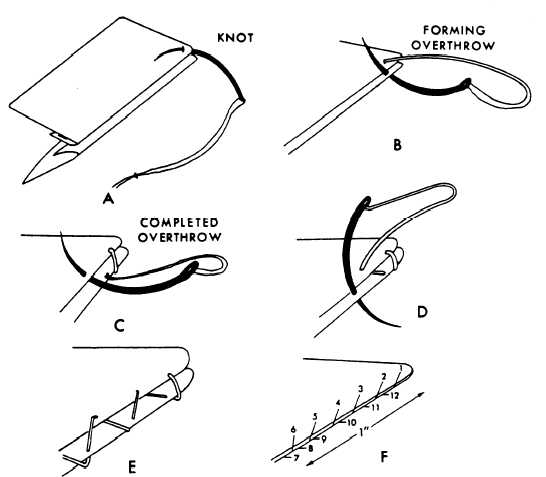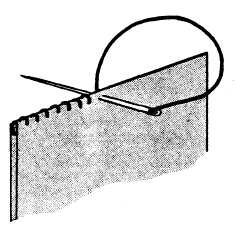material under one-half inch for reinforcement.
Insert the needle in such a manner that the knot
will be between the two pieces of material. Form
the overthrow stitch by inserting the needle
one-eighth inch from the folded edge and at right
Figure 10-27.—Overthrow stitch.
angles to the material, as shown in figure 10-27.
Make each stitch by inserting the needle from the
same side as the previous stitch. For best results,
make six stitches per inch. At the end of the row,
tie off the thread with two half hitches.
Sewing the Baseball Stitch
The baseball stitch is a useful, permanent
stitch, because it is very flexible and very elastic.
It pulls the edges of material (cloth or leather)
evenly together to form a flat surface, and it is
used for repair or closing an opening. The thread
lies on both the top and bottom edges of the
material. Like lacing, it can be pulled as tightly
as desired. Usually a curved needle is used to sew
the baseball stitch.
Thread the needle with the required type of
cord, waxed and tied with a knot at the end. If
it is fabric to be sewn, rather than leather, turn
the edges under one-half inch. Insert the needle
through the fold of one ply of material to hide
the knot, as shown in figure 10-28. Insert the
239.379
Figure 10-28.—Baseball stitch.
10-23





